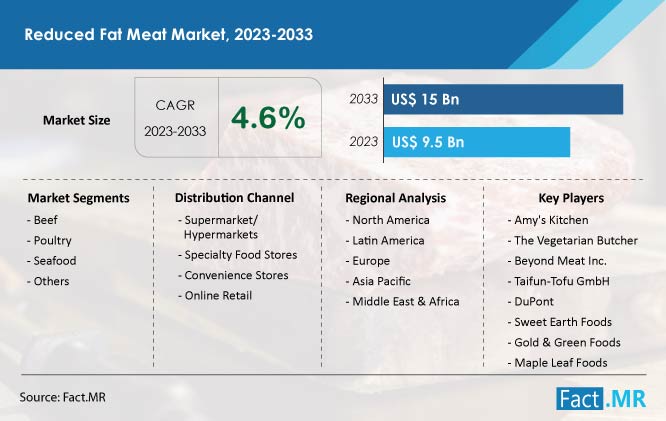Market Competitive Analysis:
The Reduced Fat Meat Market is a battleground where culinary innovation, consumer health, and market competition intersect. Established meat producers, as well as emerging brands, are vying to capture the attention of health-conscious consumers seeking flavorful yet healthier meat options. Key competitive strategies encompass product development, branding, marketing, and a focus on nutritional value.
For More insights into the, Request a Sample of this Report:
Market Dynamics:
The dynamics of the reduced fat meat market are shaped by evolving dietary preferences, shifting perceptions of health, and advancements in meat processing techniques. As consumers prioritize health and wellness, the demand for meat products with reduced fat content has surged. This dynamic landscape has prompted both traditional and new players to respond with leaner and innovative meat offerings.
Market Growth:
The reduced fat meat market has witnessed steady growth due to factors such as increasing awareness of the health risks associated with high-fat diets and the desire to maintain a balanced lifestyle. As consumers seek protein-rich foods with lower fat content, the market continues to expand, offering a range of reduced fat meat options including poultry, pork, and beef.
Market Trends:
- Lean Protein Focus: Health-conscious consumers are gravitating towards lean protein sources, making reduced fat meat an appealing choice. Meat products that are lean, yet flavorful and tender, are finding favor among those who seek a protein-rich diet without compromising on taste.
- Innovative Processing Techniques: The market is witnessing innovative meat processing techniques that preserve flavor and texture while reducing fat content. From advanced trimming methods to alternative cooking approaches, these techniques are revolutionizing the reduced fat meat landscape.
- Label Transparency: Consumers are becoming more discerning about the foods they consume. Brands that offer transparency about sourcing, processing methods, and nutritional content are gaining trust and loyalty among consumers seeking healthier options.
Market Regional Analysis:
The reduced fat meat market’s regional dynamics are influenced by cultural preferences, dietary habits, and consumer awareness of health. Different regions contribute to the global reduced fat meat landscape in unique ways:
- North America: With a focus on healthier eating, North America is a significant player in the reduced fat meat market. Consumer demand for leaner meat options has spurred the introduction of a variety of reduced fat meat products.
- Europe: Europe’s diverse culinary traditions have paved the way for innovative reduced fat meat offerings that cater to regional tastes while aligning with health-conscious trends.
- Asia-Pacific: As dietary preferences evolve, Asia-Pacific is witnessing an increasing demand for reduced fat meat products that cater to both traditional tastes and modern health concerns.
Conclusion:
The reduced fat meat market is an intersection of taste and wellness, where consumers seek healthier protein options without sacrificing flavor. As the market responds with trends like lean protein focus, innovative processing, and label transparency, competition intensifies. Regional influences further shape the market, making the journey of growth and transformation a balance between indulgence and health-consciousness.
